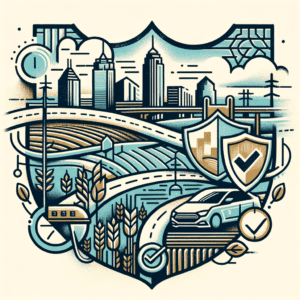How a Fourth Traffic Light Color Could Help Ease Our Transition to Self-Driving Cars

An empty street with several regular tricolored traffic lights.Photo: Seth Goldfarb (Getty Images)
Development of self-driving technology seems to have slowed down due to the complexity of navigating human-driven traffic. A new paper from the Institute of Electrical and Electronics Engineers tackles that problem head-on by proposing a fourth light on our familiar tri-colored traffic lights specifically for autonomous vehicles.
The tricolor electronic traffic light has existed since 1914, and the color scheme is used the world over. So get ready for every old-timer to absolutely lose it over the IEEE’s latest idea: A “white light,” phase on traffic lights that would serve both to help direct self-driving cars and let human drivers know where those cars are going.
Traffic lights would enter a “white phase” when coordinating AVs through traffic. The lack of traffic light color would also indicate to human drivers that autonomous vehicles are being controlled. The human driver would then just follow the actions of the AV in front of them, NextGov reports:
“This concept we’re proposing for traffic intersections, which we call a ‘white phase,’ taps into the computing power of autonomous vehicles (AVs) themselves,” says Ali Hajbabaie, an associate professor of civil, construction, and environmental engineering at North Carolina State University, and corresponding author of the paper in IEEE Transactions on Intelligent Transportation Systems.
“The white phase concept also incorporates a new traffic signal, so that human drivers know what they are supposed to do. Red lights will still mean stop. Green lights will still mean go. And white lights will tell human drivers to simply follow the car in front of them.”
[…]
The white light is a signal that AVs are coordinating their movement to facilitate traffic through the intersection more efficiently. Any non-automated vehicles—those being driven by a person—would simply be required to follow the vehicle in front of them: if the car in front of them stops, they stop; if the car in front of them goes through the intersection, they go through the intersection.
When too many vehicles approaching the intersection are being controlled by drivers, rather than AVs, the traffic light would revert to the conventional green-yellow-red signal pattern.
“Granting some of the traffic flow control to the AVs is a relatively new idea, called the mobile control paradigm,” Hajbabaie says. “It can be used to coordinate traffic in any scenario involving AVs. But we think it is important to incorporate the white light concept at intersections because it tells human drivers what’s going on, so that they know what they are supposed to do as they approach the intersection.
When IEEE researchers ran this idea through various simulations and found it improved traffic flow, regardless of how long the white phases lasted, and cost less in terms of fuel and emissions. The more AVs that researchers introduced to the simulation using the white phase, the quicker traffic flowed and less fuel was consumed.
Self-driving cars have been a dream for decades, and it’s clear we’ll need these cars to connect to infrastructure in order to achieve a truly autonomous fleet. But everyone is looking forward to when all cars are AVs. The white light is a small, ingenious way for AVs to exist during the adoption period, when we’ll have more people than computer behind the wheel.
G/O Media may get a commission
While the paper clarified that the color of the new traffic signal doesn’t have to be white, I like to imagine that someone on the team is a Velvet Underground fan and pushed hard for that to be the new color.




